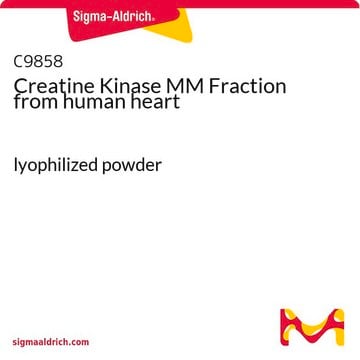D5891
1,1-Dimethyl-4-phenylpiperazinium iodide
≥98% (TLC or titration)
Sinónimos:
DMPP
About This Item
Productos recomendados
assay
≥98% (TLC or titration)
form
powder
mp
234-238 °C (lit.)
solubility
H2O: 21 mg/mL
storage temp.
−20°C
SMILES string
[I-].C[N+]1(C)CCN(CC1)c2ccccc2
InChI
1S/C12H19N2.HI/c1-14(2)10-8-13(9-11-14)12-6-4-3-5-7-12;/h3-7H,8-11H2,1-2H3;1H/q+1;/p-1
InChI key
XFZJGFIKQCCLGK-UHFFFAOYSA-M
Gene Information
human ... CHRNA1(1134) , CHRNA10(57053) , CHRNA2(1135) , CHRNA3(1136) , CHRNA4(1137) , CHRNA5(1138) , CHRNA6(8973) , CHRNA7(1139) , CHRNA9(55584) , CHRNB1(1140) , CHRNB2(1141) , CHRNB3(1142) , CHRNB4(1143)
rat ... Chrna2(170945) , Chrna3(25101) , Chrna4(25590) , Chrnb2(54239) , Chrnb4(25103)
¿Está buscando productos similares? Visita Guía de comparación de productos
Application
- to study the roles of α7 and α4β2 nAchRs in autonomic regulation of cardiovascular responses in urethane-anesthetized mice
- to study the mechanism involved in improving glucose tolerance in diet-induced obese (DIO) mice treated with DMPP
- to study its pharmacological effect on enteric viscerofugal neurons in the myenteric plexus of guinea-pig colon
Biochem/physiol Actions
Features and Benefits
Storage Class
11 - Combustible Solids
wgk_germany
WGK 3
flash_point_f
Not applicable
flash_point_c
Not applicable
ppe
dust mask type N95 (US), Eyeshields, Gloves
Certificados de análisis (COA)
Busque Certificados de análisis (COA) introduciendo el número de lote del producto. Los números de lote se encuentran en la etiqueta del producto después de las palabras «Lot» o «Batch»
¿Ya tiene este producto?
Encuentre la documentación para los productos que ha comprado recientemente en la Biblioteca de documentos.
Nuestro equipo de científicos tiene experiencia en todas las áreas de investigación: Ciencias de la vida, Ciencia de los materiales, Síntesis química, Cromatografía, Analítica y muchas otras.
Póngase en contacto con el Servicio técnico







